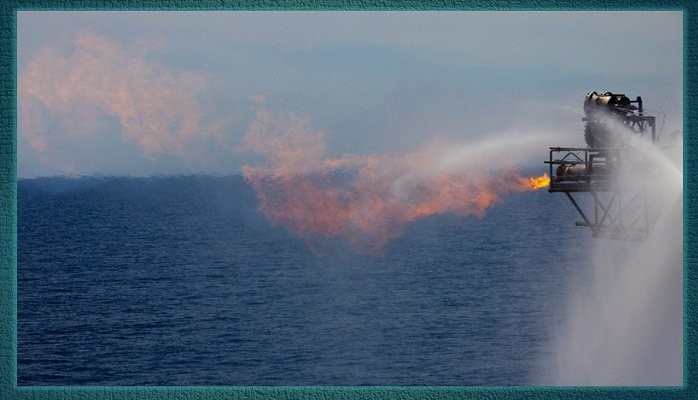
Excess Pressure (Formation Tester)
The excess-pressure plot is an alternative pressure vs. depth technique that enhances some features not always obvious in the conventional pressure vs. depth plots. The technique basically removes the effect of a chosen fluid density to improve the visualization of subtle fluid-density differences or the presence of pressure barriers.
Good data quality is still essential. For this summary, I have assumed that the user has taken the time to inspect not only the report normally obtained from the Service Company, but also has looked closely at the pressure-history & rate-history plots acquired with a formation tester.
For the practitioner who spends time analyzing pressure data, this is a useful technique to add to your tool kit.
- A single static fluid having constant density and free communication with itself has the same excess pressure at all elevations. Hence, all fluid of the same density will plot on a straight line. (Alton Brown, Improved interpretation of wireline pressure data, AAPG Bulletin, v. 87, no. 2, February 2003, pp. 295–311.)
- If the Excess-Pressure vs. TVDSS trend is rotated clockwise from vertical, the fluid density is too high. A lower density value should be used, and Excess Pressure recomputed. Alternatively, if the Excess-Pressure vs. TVDSS trend is rotated counterclockwise from vertical, a higher fluid density should be used to recalculate Excess Pressure. The assumed density is iterated until excess-pressure variance is minimized and the trend is vertical.
Figure 1 shows the behavior for the same data set, when selecting the water, oil, or gas density. A black line was added to indicate which density was used. Nonetheless, this should be obvious by the data points that plot on a vertical line. Since water is the dominant phase in this particular example, water should be the phase used to compute excess pressure. But the practitioner can decide which one to use.
- Abrupt offsets of pressure-depth trends indicate pressure seals. Changes in excess pressure less than 4 psi are not significant to indicate a seal. This is important to consider in deviated wells where depth control introduces uncertainty in the reported depth.
Figure 2 shows a traditional pressure vs. depth plot for three different wells in the same field. The fluid gradients as well as fluid contacts are indicated for each well. On the right-hand side is the excess-pressure vs. depth plot for the same three wells. It is more readily apparent from this plot that each well is located in a different fault block; hence the different fluid contacts.
- Inspection of raw pressure-data quality is essential. I have assumed that problems by leaking probe seals, probe plugging, supercharging, tight tests, or other gauge problems have been eliminated from the plot. The practitioner is strongly encouraged to scrutinize the pressure history for each depth. An idealized pressure vs. time plot is shown in the Figure 3.
The entire pressure-history plot may be obtained directly from the Service Company running their Formation Tester in your well.
- Shown in Figure 4 is another useful application of this technique. The Excess-Pressure vs. Depth plot provides a clear visualization of the different depths for Free-Water Level (FWL) and Oil-Water Contact (OWC).
The interested reader is encouraged to check:
- 2009, Bo Cribbs: Practical Wellbore Formation Test Interpretation
- 2011, T. D. Jenakumo and M. K. Ranasinghe: Application of the Excess Pressure Technique to Investigate Connectivity of Deepwater Turbidite Reservoirs, Offshore Nigeria, SPE-150746
- Petroleum Solutions has incorporated this technique into their PDP Software. (Note: There might be other software incorporating this technique. I am not promoting this particular one. It is simply that I have seen a demonstration of this particular one.)





Consultant Petrophysicist with INTEG Petrophysics, Calgary; International Affiliation as Senior Petrophysicist at Virtual Petrophysics
4yNice summary, Angel. I used Alton Brown’s AAPG paper as my reference material years ago regarding this technique.
Independent Petrophysics Consultant
4yWell done Angell. Very eloquent summary that will be useful for many.
Senior Reservoir Engineer
6yI haven' been able to use the formula correctly. Could you elaborate how to use it? I have all the required date depicted in the formula. i.e., measured pressure, gauge depth, assumed fluid density. Thanks.
Petroleum Engineering Consultant at resXP, Reservoir Expert, LLC
7ywell done, what about compositional gradient wit depth where density is depth dependent?
Founder and Managing Director at Virtual Petrophysics
8yHi Angel, Similar to Gene, I started using the excess pressure technique in the last hmmmmm 10 years. Currently working a low poro-perm clastic in the Taranaki basin and used it recently to hi-grade and select the actual pretests to determine the gas gradient and density. Do you have a method for identifying pre-tests that are super-charged in abnormally pressure reservoirs? In wells where the number of pre-test measurements are plentiful, the excess pressure method works well, however the situation I have is stacked reservoirs with only one or two pre-tests per reservoir. In this instance, it is difficult to establish a normal pressure trend, and identify which points at elevated pressure are super-charged, versus formation pressure. Some of the reservoirs are depleted, so the range is both original pressure and depleted pressures. Porosity 8 to 10 p.u. and Air Perm 1 mD.